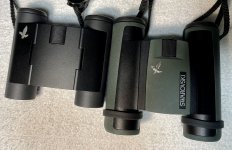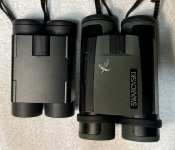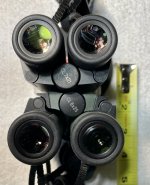Alexis Powell
Natural history enthusiast

Adding a rain cover makes using a bin inconvenient and too slow to deploy when birding, so I have rarely (if ever) found them useful, even in the days before bins were available with rain-shedding coatings. These days, with water-shedding coatings (except, I have heard, on the most recent Swarovski bins), covers are unneeded trouble. When I use a pocket bin, I am especially interested that it be as light and compact as possible, so rain covers are certainly not welcome. In my experience, for a bin of any size to carry well, it should hug the body. That is something that Nikon, B&L/Bushnell, Swift and other Japanese brands often got wrong in the past, but it is something that I have taken for granted as being done right by the premium Euro-brands. Sorry but I consider having poor "hang" an epic failure on Swarovski's part when it comes to this bin. If that is the case, I'm not accusing, but rather considering them tried and convicted. No need to make excuses for something that could have been done better.Alexis Powell, post 278,
I do not know how you use your binoculars, but I prefer them equipped with raincover and strap attached. When you use the raincover of the 25 mm Swarovski binocular: that fits perfectly on the Curio and it keeps the Curio in perfect position flat on the body, so no reason to accuse Swarovski of a complete failure.
Gijs van Ginkel
--AP











